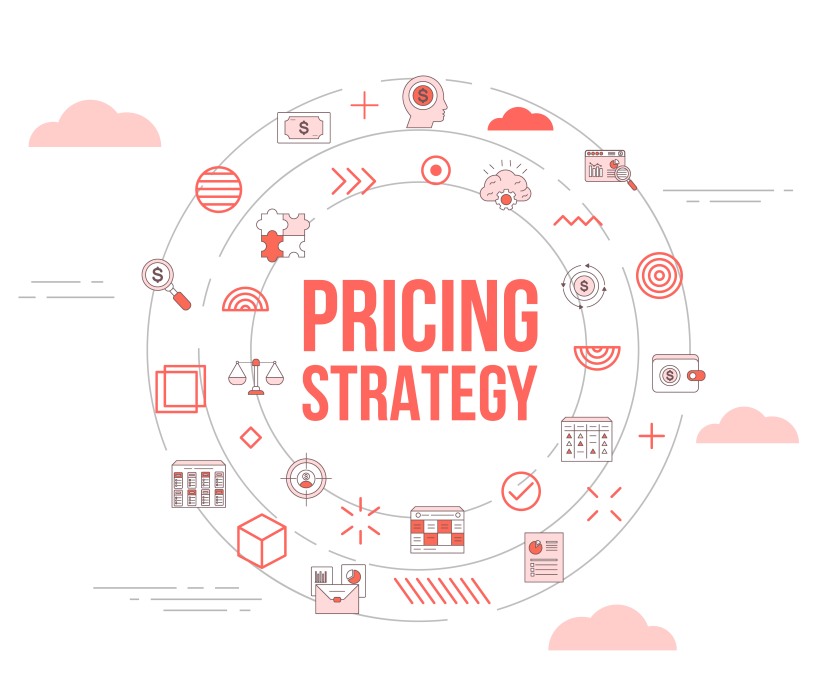Revenue performance analysis is essential to ensure the success of any business. Whether a freelancer or small business owner, understanding your income and spending can help you better manage cash flow and make more informed decisions about growing your business.
In this blog post, we will provide 8 helpful tips to help you conduct revenue performance analysis effectively so that you have all the data necessary to create a successful growth strategy for your organization.
From tracking sources of income to correctly forecasting outbound expenses, get ready to take control of your financials with these actionable steps!
What is Revenue Performance Analysis?
Revenue performance analysis evaluates your current income and expenditure to determine how your business performs financially. This means analyzing everything from operational expenses to investments, revenue streams, and more.
It’s important to conduct regular revenue performance analysis to identify opportunities for improvement and make necessary adjustments to stay on track for success. When revenue performance management is done correctly, it can help you make informed decisions about allocating resources and maximizing profits.
Usually, sales and marketing teams conduct and manage revenue performance analysis.
What are the Benefits of Conducting a Revenue Performance Analysis?
Before we dive into our tips, let’s go over some of the benefits of conducting regular revenue performance analysis.
Increased control over finances
A comprehensive revenue performance analysis lets you keep track of all the money coming in and going out, helping you identify trends and make smarter financial choices. Suppose the revenue cycle has been slowing down.
By analyzing the performance of different channels, products, and services, you can pinpoint where the decrease is coming from and take corrective action. Or, if there’s an influx of cash, you can use the insights from your analysis to ensure that it is allocated correctly and used to its full potential.
Improved customer satisfaction
Revenue performance analysis also helps you measure the effectiveness of your customer service and ensure customers are receiving the support they need. If your analysis reveals a drop in customer satisfaction, it gives you a chance to address the issue quickly and keep customers happy.
When a revenue performance advisor is hired, or analysis is done in-house, the customer experience is improved. If an analysis discovers that a certain product isn’t performing as well as expected and customers have complained, the necessary steps can be taken to resolve the issue.
More informed decisions
By understanding the financial landscape, you can make more informed decisions on when and how to launch new products or services. You’ll be able to predict potential revenue sources and understand where the biggest opportunities lie. Revenue performance analysis also helps you identify risks before they materialize. This can help you avoid costly mistakes and better use your resources.
Additionally, revenue performance analysis gives you a clear overview of the competitive landscape, empowering you to make strategic decisions to help your organization succeed.
Improved customer engagement
Revenue performance analysis can provide insights into how customers respond to your products and services. By understanding customer trends, you can make more informed decisions about how to engage them more effectively. This will help you build better relationships with customers and encourage repeat purchases. Additionally, understanding your customer base allows you to make smarter investments based on data-driven insights.
Want to unlock your business’s full potential with improved revenue performance?
Contact Growth Hackers
8 Tips to Conduct Revenue Performance Analysis
Now that you’ve seen the benefits of revenue performance analysis, here are 8 tips to help you conduct a successful analysis.
1. Develop an understanding of the company’s current financial situation
Before you can begin to analyze revenue performance, you must understand where the company currently stands financially. This means examining its income, balance, and cash flow statements to get an accurate picture of the business’s overall fiscal health.
Suppose, for example, the company’s income statement shows an increase in sales and a decrease in profits. This could indicate that costs are rising faster than sales or that the company is experiencing a decline in margins. By understanding your company’s current financial situation and creating a thorough break even analysis, you will be better prepared to identify areas of potential improvement and target them strategically.
Suppose your sales strategies are working, but your cost of goods sold is too high. You can then focus on implementing strategies to reduce costs and improve the company’s bottom line.
2. Research the industry and competitors
To better understand your company’s performance relative to its competition, it is important to research the industry and competitors. Look at their sales, profits, and margins to compare them with your own. Doing so can help you identify areas where your company is underperforming or could outperform its competition.
For example, if your company’s sales are lower than those of its competitors but have higher profits, it could be operating more efficiently. Such an observation can help you determine which strategies to focus on to improve your company’s performance.
3. Identify key revenue drivers and KPIs
To better understand the company’s operations, it is important to identify the key revenue drivers and KPIs that will enable you to measure success. Examples of common KPIs include customer acquisition rate, customer lifetime value, average order size, cost of goods sold, and marketing costs. By monitoring these metrics, you can gain insights into how successful your efforts are at driving sales growth and improving margins. If your revenue growth is slower than expected, then you can use these metrics to identify the areas needing improvement. Or when you have identified a successful strategy, you can use the same metrics to measure its success.
4. Analyze data using internal sources
Once you have identified the relevant KPIs, you can use internal sources such as financial reports, customer surveys, and sales data to analyze your company’s performance. This will enable you to identify areas of potential improvement that could lead to increased profits and higher margins. The revenue data should be analyzed from various perspectives, such as customer segmentation, product category, geographic region, and period. This will provide more detailed insights into the performance of your business and help you make informed decisions. Additionally, you should be mindful of potential industry trends and assess their impact on your revenue.
5. Utilize external sources for benchmarking
In addition to using internal sources, it is beneficial to utilize external sources of information to gain insights from competitors and industry trends. Sources such as industry reports, competitor analysis, and market research studies can provide valuable insight into how the industry is performing compared with your performance. This will help you identify areas you need to improve to stay competitive. As you measure revenue performance using internal data, you should also benchmark your performance against external sources.
Act now and watch your profits soar as you improve your revenue performance today!
6. Analyze pricing strategies
An important aspect of revenue analysis is analyzing pricing strategies to maximize profits. This involves looking at competitors’ pricing policies and assessing whether your prices are set appropriately. Additionally, it would help if you determined whether there is room for experimentation with different pricing structures to optimize sales and margins.
For example, suppose that more expensive products have higher margins but lower sales volume. In that case, you may want to consider innovative pricing strategies such as tiered pricing, subscription-based models, or dynamic pricing that can help you achieve the desired balance between sales volume and margin. In sales strategy, when your marketing efforts are properly implemented, you can increase the potential for increased revenue.
7. Monitor sales trends
Sales trends are a key indicator of performance and should be monitored closely. Analyzing changes in sales patterns can give insights into customer behaviors and preferences, as well as potential opportunities or threats. Regularly reviewing sales trends can help you identify which products are selling well and allow you to adjust your product mix accordingly.
Additionally, tracking sales seasonality over time can provide valuable insights into planning inventory, staffing requirements, and promotions to maximize revenue. For a sales funnel, understanding a customer’s journey and what influences them to purchase can help you optimize their experience at each stage.
8. Use technology to automate processes
Automating revenue performance analysis processes can save time and reduce errors while providing more accurate results than manual methods. With automated tools such as spreadsheet programs, data visualization software, and analytics platforms, businesses can easily analyze data on sales performance, pricing strategies, customer behavior patterns, and more. This allows for faster decisions that are informed by real-time information about the market environment and customers’ needs. By leveraging technology to automate revenue performance analysis processes, businesses can create more efficient and effective strategies that lead to improved results.
Following these 8 tips for conducting revenue performance analysis, businesses can make informed decisions and optimize their pricing strategies to maximize sales and profits.
Closing Thoughts About Conducting Revenue Performance Analysis
Revenue performance analysis is essential for businesses to succeed in today’s competitive market. By taking the time to review and analyze data on sales, pricing strategies, customer behaviors, and more, businesses can make informed decisions that lead to improved results. With automated tools such as spreadsheet programs, data visualization software, and analytics platforms, businesses can quickly and accurately analyze data and create optimized strategies that help them achieve their goals.
So whether you are a small business or a large corporation, proper revenue performance analysis is the key to long-term success. By staying on top of market trends and customer habits, businesses can create practices that will keep their revenue growth for years.
Growth Hackers is a respected growth hacking agency helping businesses from all over the world grow. There is no fluff with Growth Hackers. We help entrepreneurs and business owners conduct revenue performance analysis, increase their productivity, generate qualified leads, optimize their conversion rate, gather and analyze data analytics, acquire and retain users and increase sales. We go further than brand awareness and exposure. We make sure that the strategies we implement move the needle so your business grow, strive and succeed. If you too want your business to reach new heights, contact Growth Hackers today so we can discuss about your brand and create a custom growth plan for you. You’re just one click away to skyrocket your business.









